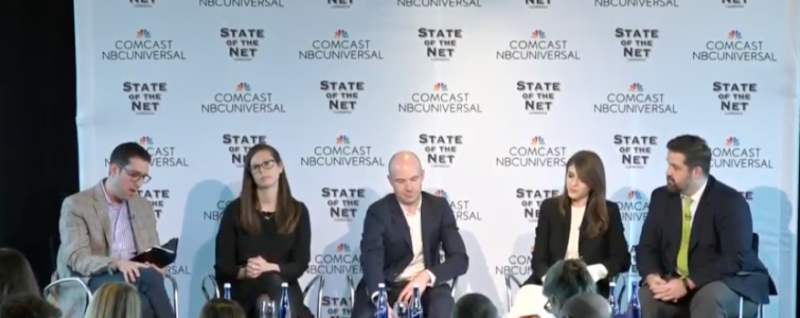We’ve come to expect new announcements about futuristic technologies in our private lives. You know, the gadgets that companies convince us will make us live longer, feel better and be digitally connected at all times.
But if you look at public dialogue around emerging technologies, government is glaringly missing from those conversations.
“Oftentimes, if a government body isn’t publicly issuing guidance or a regulation, people assume that they are not thinking about it,” said Justin Herman, Emerging Citizen Technology Lead at the General Services Administration (GSA). “Nothing can be farther from the truth.”
Herman said the government is looking at the prospects of a shared services model for emerging technologies like blockchain and artificial intelligence. The reason being there is a great demand for collaboration, expertise and knowledge sharing without having to start from scratch for every new pilot or project.
“It gives us a clean slate to do this and approach IT modernization in [the] way it should be, unshackled and unbound by inefficiencies of the past,” Herman said. For instance, there shouldn’t be eight different agencies working on blockchain use cases for electronic health records. “[Even] if something is a successful one-off pilot, what does that matter; it isn’t shared,” he said. Agencies should be working together on one pilot. But that will require government to change its current approach.
Herman’s comments came during a panel discussion at the State of the Net Conference in Washington, D.C. this week. The internet policy conference is hosted by the nonprofit Internet Education Foundation and brings together congressional staff, government policymakers and industry to discuss key issues that affect the way we promote communications, commerce and democracy via a global internet.
In this particular panel, the focus was on blockchain technology — what it is, how it is and can potentially be used in government and industry and what the future holds for this emerging technology. Explaining what it is and how it can help government is where more work can be done. (Check out GovLoop’s 101 explainer on blockchain here.)
“A blockchain facilitates secure online transactions,” according to the World Blockchain Foundation. “A blockchain is a decentralized and distributed digital ledger that records transactions across many computers in such a way that the registered transactions cannot be altered retroactively.”
One way to think of blockchain is being similar to a set of rail tracks, Mercina Tillemann-Dick, Chief Operating Officer of the Global Blockchain Business Council, said during State of the Net. To move something between two people, you need tracks. The cryptocurrency bitcoin is one example of the types of cars that can run on those tracks.
James Cross, Director of Corporate Strategy at Workday, noted that “the things that make blockchain viable for digital currency, make it good for other applications.”
The Postal Service, Centers for Disease Control and Prevention, State and Homeland Security departments and state and local governments are already charting a path forward when it comes to government use of blockchain. Supply chain management, federal personnel workforce data and financial management are a few of the current use cases.
Government Collaboration Around Emerging Tech
Within the past year, there has been such an overwhelming demand across federal agencies for more governmentwide programs, knowledge networks and joint pilot opportunities to explore blockchain technologies, Herman said. “The more people recognize and discuss it, the better we can make decisions.”
Herman works with more than 320 federal, state and local agencies on emerging technologies such as blockchain, artificial intelligence and social and collaborative technologies. GSA’s Emerging Citizen Technology Office recently launched a technology atlas that serves as an open and crowdsourced repository of emerging tech use cases, reports, testing and evaluation resources and more.
“We should be thinking [about] and exploring those things together,” Herman said.
GSA, for example, completed work on a blockchain-based proof of concept that streamlined the acquisition process, making it easier for small companies to do business with the government faster.
Herman noted that embracing emerging technology in government is a cultural change because it is changing the way people work. Another challenge is that people often take a zero-sum approach to federal technology. They assume that if an agency is dedicating time to emerging technology, that means they are not paying attention to cloud or something else.
Instead, he said, the focus should be how cloud, data services, AI, blockchain and other technologies can improve government operations as one integrated technology approach.





Leave a Reply
You must be logged in to post a comment.